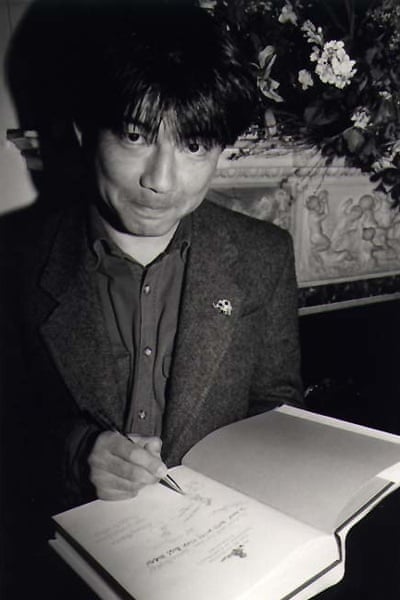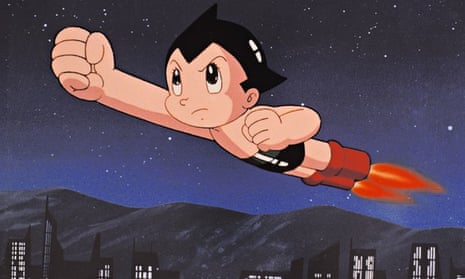In Japan comics get as much respect as any other art form, so it surprised me when I came to Britain and discovered people were embarrassed to be seen reading them. I never felt that reading comics was something to be ashamed of – they are as good as anything else.
Osamu Tezuka’s Astro Boy (Tetsuwan Atom) was my favourite artist when I was growing up closely followed by Shigeru Mizuki’s excellent little spooky comics and the incredible Yoshiharu Tsuge.
If you grew up in 1960s Japan, you had to wait patiently for a whole month for the next episode of Astro Boy, serialized in a monthly manga magazine. Osamu Tezuka, the creator of this science fiction masterpiece and several other popular series, was the father of modern manga.
A brilliant artist and storyteller, he was so prolific there seemed to be no end to his creativity. His stories ranged from science fiction to historical sagas and medical dramas (Tezuka was a qualified doctor) among many other subjects and he even turned the works of Dostoyevsky and Goethe into graphic novels. He was a Shakespeare who could draw.
Later in the 1960s came Shigeru Mizuki. While Tezuka was futuristic and somewhat westernized, Mizuki’s stories were humorous, satirical and folkloric, populated with countless Japanese ghosts and fairies. He had encyclopedic knowledge of the nether world. Those who had passed over in Mizuki’s stories often seemed more real than his living characters.
Then came Yoshiharu Tsuge whose short comics, called “Neji-shiki” (The Screw System), completely changed the perception of comics in Japan. He created a surreal enigma in beautiful illustrations and there has been nothing like it before or since. Along with Tatsumi Hijikata, the founder of Butoh Dance, Tsuge was a truly original, innovative artist of 20th century.

I started drawing when I was four or five years old, spending every evening inventing airplanes, cars, machines, monsters or robots. Unless I had filled a piece of paper with pencil lines, I didn’t want to go to bed. Because it was such an everyday part of my life, I never thought about taking my drawing seriously. It never occurred to me to go to art school or make a career out of art.

I was 16 when my brother discovered Winsor McCay in the shelf of an English bookstore in Ginza, Tokyo. He told me exactly where the book was in the shop and urged me to go and have a look. We made many more trips to the shop before we could put our money together and afford to buy Little Nemo in Slumberland http://en.wikipedia.org/wiki/Little_Nemo. It is more than a century old now, but for me nothing has ever surpassed the beauty of these pages. Having read so many comic books in my youth I was well aware of their storytelling power, but McCay showed me their wider visual possibilities.

When I was 19, my 10-year-old cousin told me that I should have a go at manga. The next day, I bought a small sketchbook and started the first page. I only had a vague idea of the story and improvised page by page. It took me months to complete it, though it only had 22 pages. The finished book didn’t look like a cartoon strip. (Though I still gave my little cousin a photocopy.) It was more like a picture book. When I realized that my first ever story was commonly called a picture book, I got interested in the medium. To cut a long story short, that eventually lead me to where I am today.
- Satoshi Kitamura is the author and illustrator of many incredible books including Angry Arthur (written by Hiawyn Oram) and The Comic Adventures of Boots. Satoshi’s latest books Millie’s Marvellous Hat and The Yes (written by Sarah Bee) are available from The Guardian bookshop. Lucky you if you caught Satoshi at The Children’s Bookshow – he hopes to come back to the UK soon!
